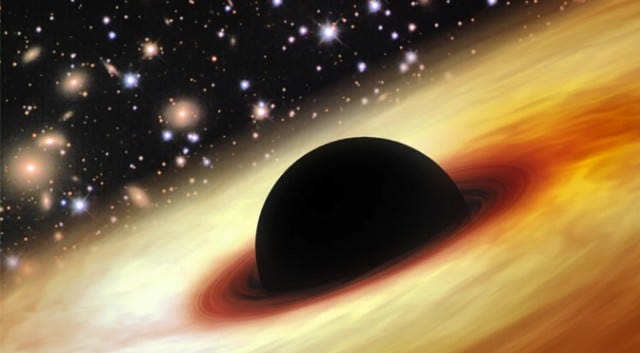Fascinating Insights into Our Galaxy's Central Black Hole
Written on
Chapter 1: Discovering Sagittarius A*
Recent advancements in astronomy have provided us with striking images of a colossal black hole located in a distant galaxy. However, our own Milky Way holds a supermassive black hole at its core, a silent giant that may play a crucial role in maintaining the galaxy's structure. While this black hole remains invisible, its influence can be observed, manifesting as a sphere of intensely heated gas. A groundbreaking study has now unveiled a contrasting feature: a ring of significantly cooler gas encircling the black hole.
Sagittarius A* (pronounced “Sagittarius A Star”) is situated approximately 26,000 light-years from Earth. Observing this astronomical phenomenon is challenging due to the need to peer through the dense disk of the Milky Way, which is crowded with stars, nebulae, and both hot and cold gas clouds. This gas is expected to create a rotating accretion disk that stretches several tenths of a light-year from the black hole's event horizon.
Historically, our observations have predominantly captured the hotter gas surrounding Sagittarius A* through millimeter-wave imaging, leaving a gap in our understanding of the black hole's impact on its vicinity. Until now, scientists could only speculate about the presence of cold gas, but recent findings have clarified this aspect.
The term “cold” is relative in this context. The hot gases encircling Sagittarius A* reach temperatures around 18 million degrees Fahrenheit (10 million degrees Celsius), which is roughly two-thirds the heat found at the core of the sun. This hot gas emits X-rays, a key indicator of black hole activity. In contrast, the colder hydrogen gas exists at about 18,000 degrees Fahrenheit (10,000 degrees Celsius). Researchers utilized the Atacama Large Millimeter/submillimeter Array (ALMA) to detect the faint radio frequencies emitted by this cooler gas.

The resultant image illustrates the movement of cold gas around Sagittarius A*. By analyzing the Doppler shift in the gas's spectrum as it moves toward and away from us, a ring-like formation was identified. The red sections indicate gas moving away from Earth, while the blue portions signify gas approaching us. The research suggests this gas ring extends to about one-hundredth of a light-year from the event horizon—approximately 1,000 times the distance from the Earth to the sun.
This valuable data may shed light on the mechanisms by which black holes consume surrounding matter. While we may not have to worry about such phenomena on our planet, these insights could enhance our understanding of cosmic events in other regions of the universe.
Explore the swirling magnetic field surrounding our galaxy's central black hole in this informative video.
Chapter 2: The Gigantic Black Hole and Its Surroundings
Dive into the details of the gigantic black hole at the heart of our galaxy, featuring insights from expert Re'em Sari.